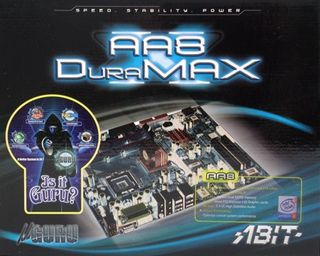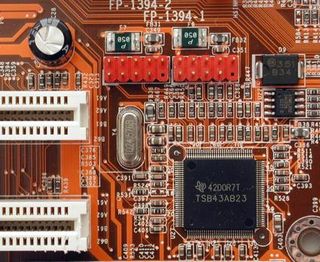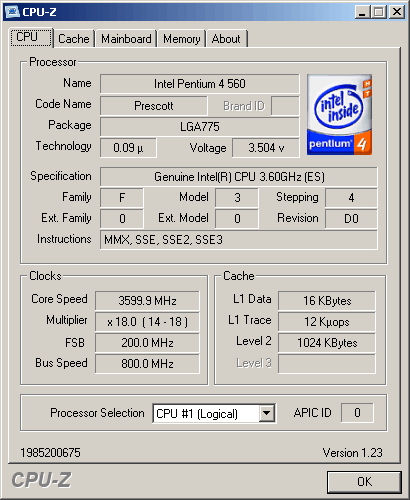Mobo Makers Try Again with Intel's 925X and 915P Chipsets
Abit AA8

BIOS: AA8_13.B00 (06/02/2004)
The AA8 is Abit's flagship and is equipped with the 925X chipset from Intel. All the main features of the chipset are utilized, including DDR2 support, High Definition Audio (Realtek ALC 880) and Gigabit Ethernet - although this is only via the PCI. Users have two 32 bit PCI slots and three x1 PCI Express slots at their disposal.
In contrast to other manufacturers, Abit uses its self-designed µGuru chip, which represents the highest instance on the board and is therefore ideal for monitoring all vital functions and for overclocking. The Windows software OC Guru works hand-in-hand with the hardware extension and offers maximum overclocking convenience. We achieved clock rates of just over 270 MHz in the test.
Nevertheless, the µGuru architecture is a disadvantage for upgrade enthusiasts, as an existing Windows installation cannot be transferred to a newer Abit board. Moreover, the chipset also befuddles standard diagnostics tools, such as CPU-Z or Sandra, as having an incorrect CPU voltage of 3.5V. A Pentium 60 could cope with this setting without any problems, but the P4 Prescott could not.
The BIOS menu is somewhat slow to react and the standard FSB rate is incomprehensibly high at 204 MHz - i.e. factory overclocking par excellence. In the 3DMark 2003 the Abit board is still a few hundred points below the fastest competitors on conclusion of the test. The AA8 passed the cut-out test, as required by the specification.
Abit has opted for a Northbridge fan, which is only really needed for intensive overclocking. Under normal circumstances, the air flow of the CPU cooler is sufficient, which is supposed to have radially mounted fins, according to the specification. The port 80 module is also useful, which issues the system status in the form of hexadecimal values and is ideal for locating faulty components.


A FireWire port is also provided - Abit donates a suitable controller from Texas Instruments for the AA8.
Stay on the Cutting Edge
Join the experts who read Tom's Hardware for the inside track on enthusiast PC tech news — and have for over 25 years. We'll send breaking news and in-depth reviews of CPUs, GPUs, AI, maker hardware and more straight to your inbox.

The Northbridge fan only really makes sense for intensive overclocking of the system.

A full range of accessories is provided with the board - as is normal with Abit.

A FireWire controller offers three ports in total - one of them is located in the back panel.

Unfortunately, CPU-Z reads the core voltage of the test processor wrongly: at 3.5 volts the Pentium 4 would be well and truly grilled.
Current page: Abit AA8
Prev Page Emergency Disconnection By Means Of The THERMTRIP Signal Next Page µGURU ClockMost Popular

